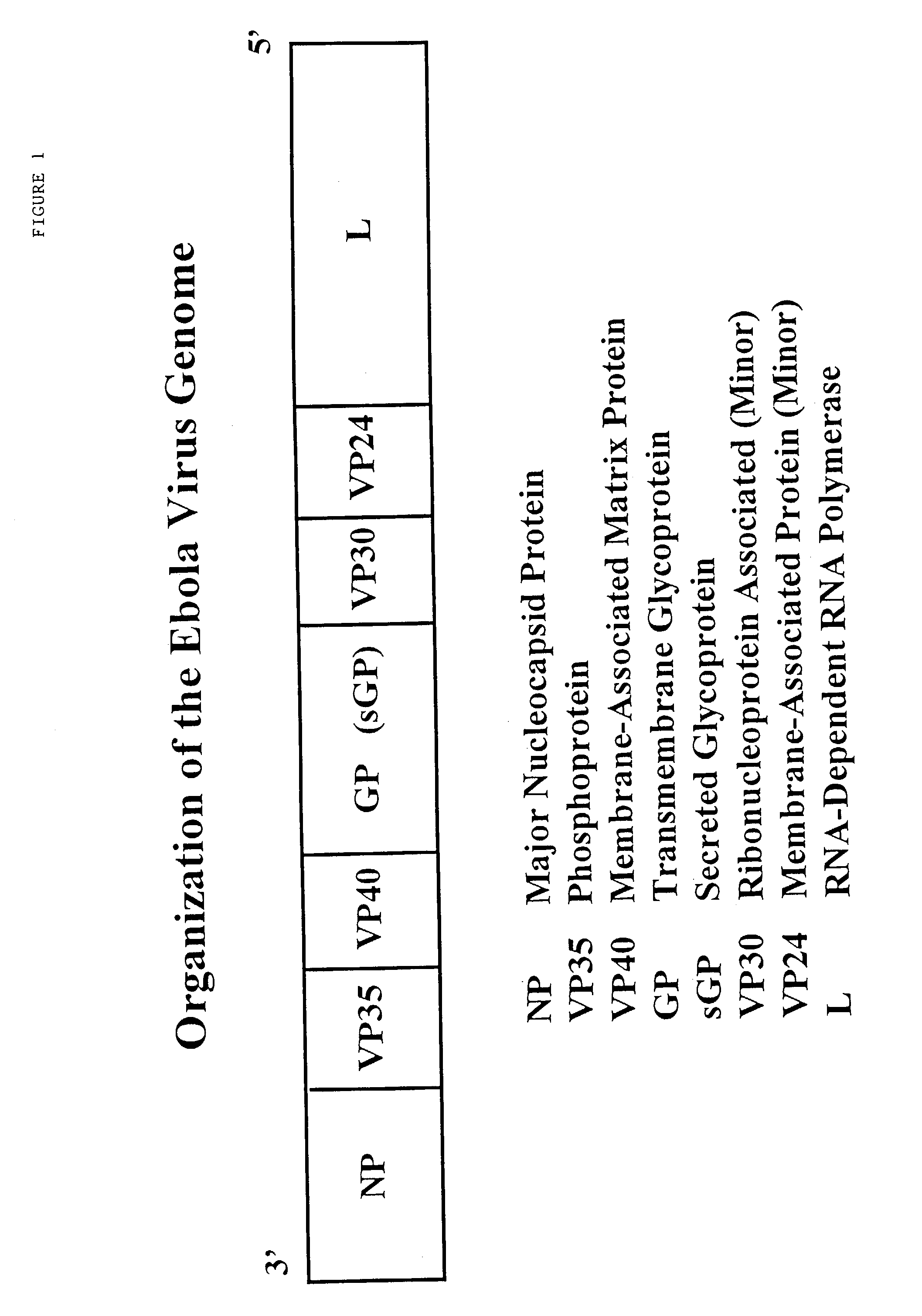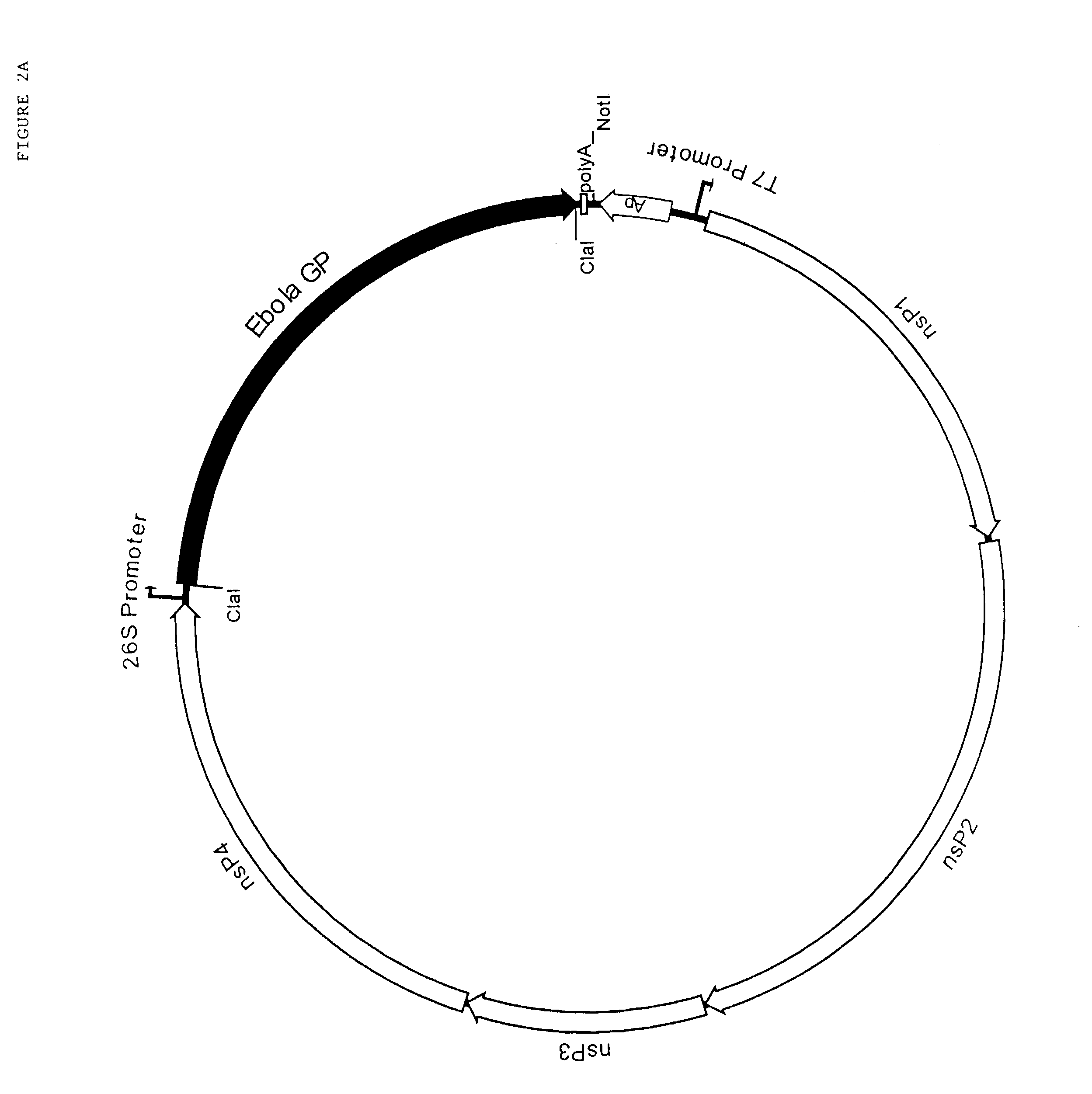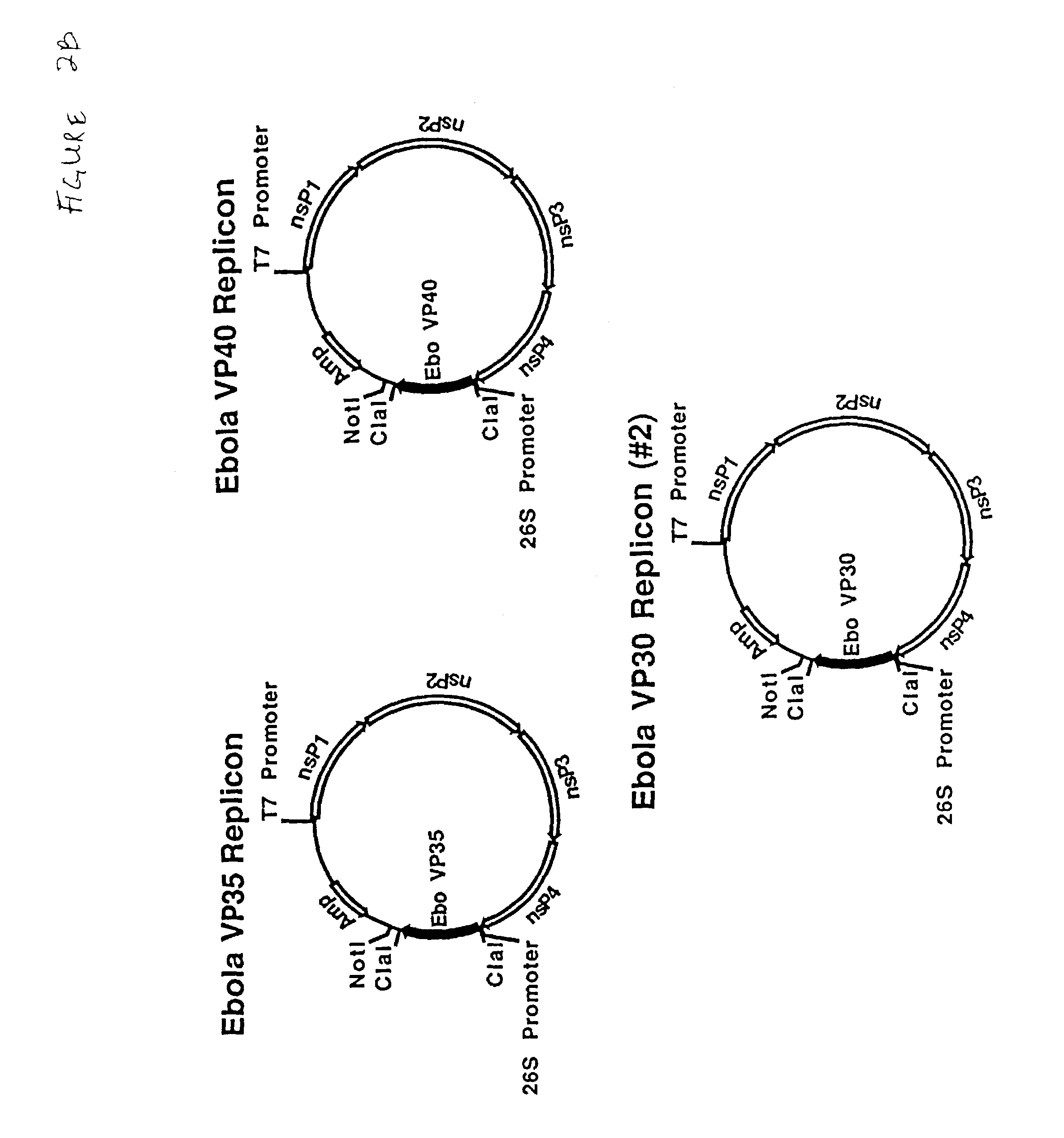Ebola peptides and immunogenic compositions containing same
a technology of peptides and compositions, applied in the field of ebola peptides and immunogenic compositions containing same, can solve the problems of limited benefit for humans or non-human primates, no effective vaccines or effective treatment for filovirus infections,
- Summary
- Abstract
- Description
- Claims
- Application Information
AI Technical Summary
Benefits of technology
Problems solved by technology
Method used
Image
Examples
example 1
[0108]Survival of Mice Inoculated with VRPs Encoding Ebola Proteins
[0109]Mice were inoculated two or three times at 1 month intervals with 2×106 focus-forming units of VRPs encoding individual Ebola virus genes, or Lassa virus NP as a control, or with phosphate buffered saline (PBS). Mice were challenged with 10 pfu of mouse-adapted Ebola virus one month after the final immunization. The mice were observed daily, and morbidity and mortality data are shown in Table 1A for BALB / c mice and Table 1B for C57BL / 6 mice. The viral titers in individual sera of some mice on day 4 (BALB / c mice) or day 5 (C57BL / 6 mice) following the initial viral challenge were determined by plaque assay.
[0110]
TABLE 1Survival Of Mice Inoculated With VRPs Encoding Ebola ProteinsVRP#InjectionsS / T1 (%)MDD2V / T3Viremia4A. BALB / c MiceEboNP330 / 30 (100%)5 / 55.2219 / 20 (95%)75 / 54.6EboGP315 / 29 (52%)81 / 56.6214 / 20 (70%)73 / 53.1EboVP24327 / 30 (90%)85 / 55.2219 / 20 (95%)64 / 44.8EboVP30317 / 20 (85%)75 / 56.2211 / 20 (55%)75 / 56.5EboVP3535 / ...
example 2
[0111]VP24-Immunized BALB / c Mice Survive a High-Dose Challenge with Ebola Virus
[0112]BALB / c mice were inoculated two times with 2×106 focus-forming units of EboVP24VRP. Mice were challenged with either 1×103 pfu or 1×105 pfu of mouse-adapted Ebola virus 1 month after the second inoculation. Morbidity and mortality data for these mice are shown in Table 2.
[0113]
TABLE 2VP24-Immunized BALB / c Mice Survive A High-Dose ChallengeWith Ebola virusRepliconChallenge DoseSurvivors / TotalEboVP241 × 103 pfu5 / 5(3 × 104 LD50)EboVP241 × 105 pfu5 / 5(3 × 106 LD50)None1 × 103 pfu0 / 4(3 × 104 LD50)None1 × 105 pfu0 / 3(3 × 106 LD50)
example 3
[0114]Passive Transfer of Immune Sera Can Protect Naive Mice from a Lethal Challenge of Ebola Virus
[0115]Donor sera were obtained 28 days after the third inoculation with 2×106 focus-forming units of VRPs encoding the indicated Ebola virus gene, the control Lassa NP gene, or from unvaccinated control mice. One mL of pooled donor sera was administered intraperitoneally (ip) to naive, syngeneic mice 24 h prior to intraperitoneal challenge with 10 pfu of mouse-adapted Ebola virus.
[0116]
TABLE 3Passive Transfer of Immune Sera Can Protect Unvaccinated Micefrom a Lethal Challenge of Ebola VirusSpecificity ofSurvivors / Mean DayDonor SeraTotalof DeathA. BALB / c MiceEbola GP15 / 20 8Ebola NP1 / 207Ebola VP240 / 206Ebola VP300 / 207Ebola VP35ND1NDEbola VP400 / 206Lassa NP0 / 207Normal mouse sera0 / 206B. C57BL / 6 MiceEbola GP17 / 20 7Ebola NP0 / 207Ebola VP24NDNDEbola VP30NDNDEbola VP350 / 207Ebola VP40NDNDLassa NP0 / 207Normal mouse seraO / 2071ND, not determined
PUM
| Property | Measurement | Unit |
|---|---|---|
| length | aaaaa | aaaaa |
| resistance | aaaaa | aaaaa |
| antibiotic resistance | aaaaa | aaaaa |
Abstract
Description
Claims
Application Information
 Login to View More
Login to View More - R&D
- Intellectual Property
- Life Sciences
- Materials
- Tech Scout
- Unparalleled Data Quality
- Higher Quality Content
- 60% Fewer Hallucinations
Browse by: Latest US Patents, China's latest patents, Technical Efficacy Thesaurus, Application Domain, Technology Topic, Popular Technical Reports.
© 2025 PatSnap. All rights reserved.Legal|Privacy policy|Modern Slavery Act Transparency Statement|Sitemap|About US| Contact US: help@patsnap.com



